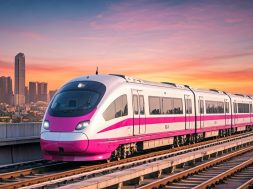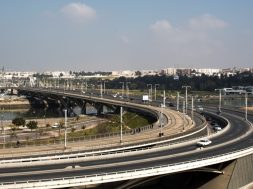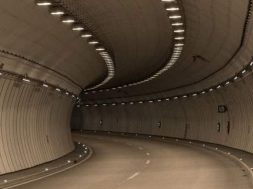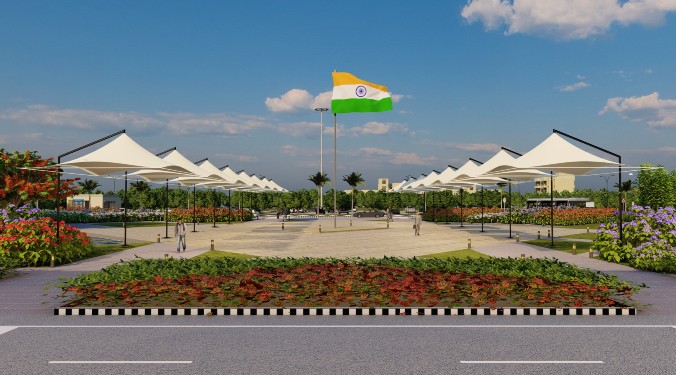“After the commission, Mumbai Metro One will provide the much needed east-to-west connectivity and carry about 6 lakh commuters per day at affordable fares,” assures Dilip Kawathkar, Joint Project Director (PR), MMRDA
The Union Ministry of Railways Research Designs and Standards Organisation has finally given "speed certificate" to Mumbai Metro One, and the much delayed project is a step closer toward being commissioned. In an exclusive interview with Afreen Sayed, Dilip Kawathkar talks as to how the project is going to benefit the Mumbaikars.
A successful trial run of Mumbai Metro was conducted in May 2013. It`s almost been a year, yet not opened to the public. Could you update on the current status?The work of Metro Line-1 project is almost complete, and trial runs are in progress. Mumbai Metro One Pvt. Ltd. (MMOPL) has recently received a "speed certificate" from the Union Ministry of Railways Research Designs and Standards Organisation taking the project a step closer toward being commissioned. We are expecting the clearance from Commissioner of Railway Safety very soon after which the project will be opened for the public.
What are the roadblocks?The 11.4-km route, through which the VAG corridor passes, was full of narrow roads. While narrow roads were huge constraints, structures across both the sides of the alignments were also closer to the construction area, and great precision was needed during the erection of the pillars as well as the stations. The VAG corridor also passes over the Western Railway Line at Andheri, and construction of a 180-metre long steel bridge was a major challenge that the consortium had to deal with. Moreover, the line also passes through thickly populated area in Andheri (West) near the station and construction there posed a great challenge. The line even crosses over the Western Express Highway and a huge cable stayed bridge had to be constructed over the Jog Flyover near the Western Express Highway metro station.
The construction of the depot in DN Nagar was also a daunting task. The depot land was low lying with huge deposits of marine clay and required major ground improvement which spanned over a period of almost 20 months. It also has the sharpest curves and interface constraints between the operational building and underground utilities, which were extremely difficult to construct.
Once commissioned, what will be the passenger-carrying capacity?After the commission, Mumbai Metro One will provide the much needed east-to-west connectivity and carry about 6 lakh commuters per day at affordable fares.
How is it going to benefit the Mumbaikars?Metro along the Versova-Andheri-Ghatkopar route will benefit the Mumbaikars in a number of ways.
First, metro will serve one of the busiest and congested routes in Mumbai, i.e. Versova-Andheri-Ghatkopar. The metro trains that are designed with more standing space, a large number of people will travel by the metro train instead of travelling by road. This will thus help ease the traffic on the road and the burden on other public transports. By easing the traffic on the road, metro will help in reducing vehicular pollution as well.
Second Mumbai Metro One Project, which is going to run on a dedicated elevated corridor, will have highest levels of comfort for the passengers with fully air-conditioned world-class coaches and automatic door-closing system, provision for lifts and escalators at stations, modern automatic fare collection system, highest levels of passenger security systems, CCTV cameras, passenger communication system etc.
Third, the existing sub-urban trains connect the northern and southern parts of the city. Mumbai Metro One Project will provide east-west rail-based connectivity to central and western suburbs. The biggest advantage would be the substantial reduction in travel time the entire 11.4-km distance will be covered in 21 minutes as against the present 90 minutes along with much improved, comfortable travelling experience.
What are the safety measures you are going to implement?Mumbai Metro will follow world-class practices and ensure proper safety so that passengers get to commute in a well-protected environment. There will be CCTVs in and around the exit and entry gates of the metro as well as inside the coaches and around the station premises to keep a watch on all the movements. Also, there will be police and other security agencies, private security guards for the safety of the commuters.
Moreover, in case of any untoward incident or an emergency in a running metro, passengers will be able to communicate directly with the metro motormen (pilots) to establish a contact with the ground staff. Besides, there will be strict frisking both through manual methods as well as automatic equipment such as scanners and metal detectors to make sure that no objectionable material is taken inside the metro premises.
Construction for Metro III is to commence in January 2015. Are we ready for the same?MMRCL will be issuing detailed tenders for Metro III by July 2014 and award the contract to the successful bidder by October 2014 for the project to be undertaken on engineering, procurement and construction (EPC) basis.
Japan International Co-operation Agency (JICA), Government of India, and Government of Maharashtra through MMRDA will be funding the project.
The authority also has received a very positive response from 14 consortiums to the pre-qualification bids for the first underground metro in the country’s financial capital.
Cookie Consent
We use cookies to personalize your experience. By continuing to visit this website you agree to our Terms & Conditions, Privacy Policy and Cookie Policy.









